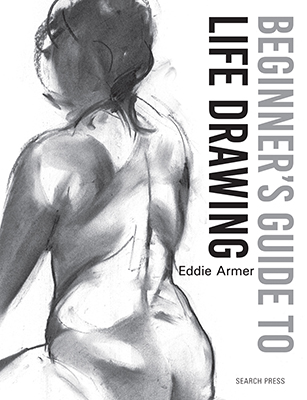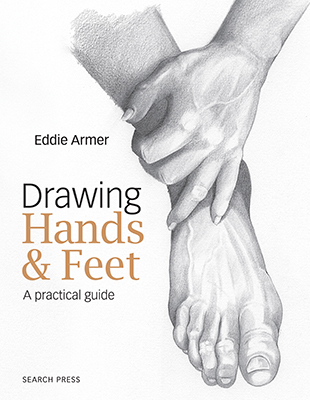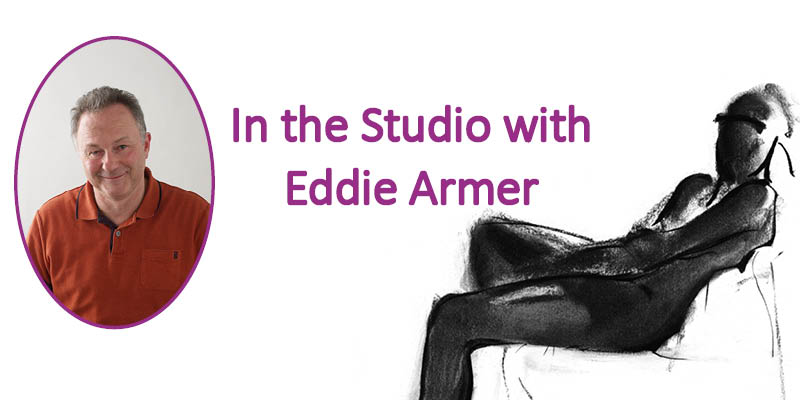
After having a career in graphic design and illustration, in 2005 Eddie Armer decided to focus on his passion for teaching life drawing. Since then, Eddie has gone on to translate his knowledge into two fantastic life drawing books, Beginner’s Guide to Life Drawing and Drawing Hands & Feet.
We caught up with Eddie, before his monthly workshop at the Search Press studios to find out about his experience with life drawing.
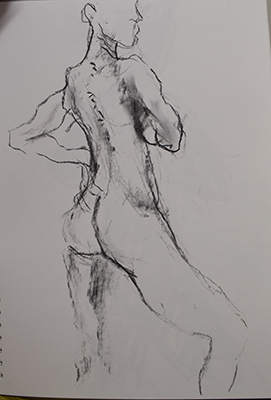
How did you get into teaching and writing about life drawing?
I went to art school for four years in the 1970s and did a bit of graphic design and illustration. In 2005, I started running workshops every week. I used to run workshops in Italy for 2 weeks, twice a year which I did for a while. Then I had a few workshops in London however, I noticed I always had connections to several people at Search Press, which led to me running workshops in the craft room at the Search Press office. Eventually, Juan [Hayward] the Head of Design at Search Press approached me and said, ‘why don’t you do a book?’. It was wonderful because, I’ve got thousands of drawings and quite a lot of knowledge. It was only until then that I had to still down and put that knowledge into words and I had to articulate it. So, making a book really made me question what I do and how I perceive things visually. I found it eddie-fying!
What was the process like when creating the second book?
My second book, Drawing Hands & Feet took quite a long time to write, as it’s the most difficult thing to draw hands and feet for an artist in life drawing. However, it was even more difficult for me as I moved on in life and again I had to step back and analyse my techniques, as I almost disposed of all my original knowledge. I had to go back and think what was I looking at and how do I capture the form.
I came up with ways of capturing form in an abstract way to visualise something; for example, if you have funny shape-hand, if you break it up in boxes, it's easier to focus on the form. If you look at the hand as a whole, then your perspective starts to shorten and suddenly it doesn’t look like a hand any more, as the form goes. That’s why I tend to steer away from taking photographs of the subject I’m drawing, as I believe you're not seeing the form, you're copying it as all the work has been done for you by the camera. You can never perfect life drawing as the subject is always moving, and the naked eye darts around, unlike the camera which is static. You build up the picture in the mind's eye of the figure, you can’t draw it from a camera as it distorts reality.
I found this to be especially true whilst writing the book. Depending on where your focus is, that’s what you’re concentrating on rather than the whole subject, as details get out of shape, and therefore you need little mechanisms to control that. That’s why all of us do distorted drawings when we’re working from life. The beauty and purpose of life drawing is not to get a perfect picture, this doesn’t matter. There's no such thing as a mistake, it’s a learning process. Life drawing is about learning to observe life: we all look but we don’t see. The brain is designed and preconditioned to trick you visually, in regard to life drawing.
What key elements do you think help artists when life drawing?
In life drawing, you have to learn how to draw proportions and make judgements on how to draw the form rather than measuring.
One of the benefits of life drawing is the way in which a workshop is conducted. If I’m running a workshop, I start students off with doing a two-minute drawing. What I try to get my students to do is work very fast and scribble. It doesn’t matter what they produce, but I aim to get them to capture the form. What I find sometimes is that some people have missed the point; they look at the drawing rather than the model, which they need to do to capture that image. There’s supposed to be a connection to the image you see in front of you, as you’re responding and relating to what you’re seeing and translating this onto the piece of paper. This demonstrates how students learn to work quickly, and how they learn to use the right side of their brain which is about intuition. Whereas, the left side is all about putting things in order and about control.
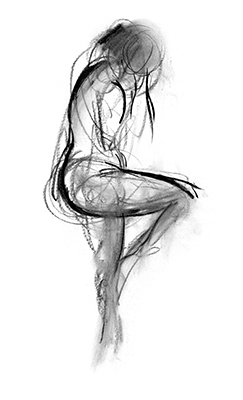
What mediums do you prefer to use?
It depends on the length of the pose. In a two-minute sketch, I use a ballpoint biro pen. I don’t use erasers, that’s a no no, because if you’re working in pencil and you can use the line that’s wrong to help you use the right line, you don’t have to rub it out. You can actually get quite an informative and interesting drawing because if you have lots of guidelines around it, it can look quite three-dimensional and represents the space around the body. Working with guidelines gives a hint on what’s going on around an image.
I do like ballpoint pens because you can’t rub them out when you’ve used them. I love charcoal; while you can’t use it for small details however, you can use it at an angle to smudge things.
What important lessons have you learnt from life drawing?
Life drawing is all about being in the moment. It’s similar to playing music, as your mind is in the moment and is focused. It’s doing something like that gives you a chance to escape from your problems and get lost in the moment. When I look back at my drawings, I can visualise where I was in the moment because I forget about the likeliness of the model, I remember everything around me and the environment of the moment.
I’ve learnt that the human body is such a difficult subject and challenge to draw; however it’s wonderful for artists to develop an eye. I believe in timed poses, for five minutes, ten minutes, half an hour or whatever. You have to stop them–you can’t let them go on and that means you pace yourself in a different way. In two-minutes you work very quickly, an hour is a long time to pose. If you have got different timings in mind, it’s really important to stick to those times and train your eye as much or what’s needed in those times.
Don’t ever worry about finishing; it’s not an illustration and if you’ve done fifteen drawings in an evening or whatever, just put them away and look at them next week or the next day. Then you’ll be able to judge your work, and if you feel it's not to the kind of standard you want, don’t be put off by that, it’s an exercise to work out what your doing it; it’s a visual exercise. Even if it ‘looks wrong’, you’re getting something from the sketch, you're observing. It is lovely to have a finished drawing but you're governed by the length of the pose.
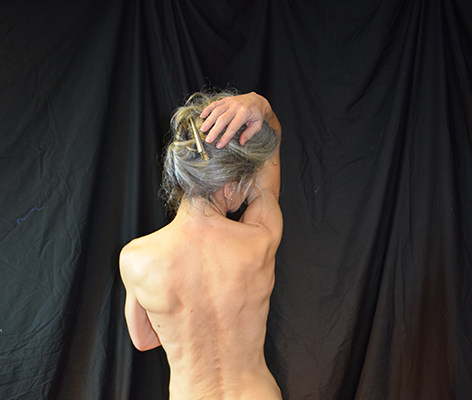
Your distance from the model is important: if the model is at one end of the room and you are at the other end, you've got more of a chance of getting everything into your drawing. If you're too close to the model, you're looking and retaining too much detail and information, and distortion will happen.
Do you find that there are many common misconceptions regarding life drawing?
Some people think that they go to a life drawing class just to draw naked people. There's a difference between being naked and nude: being naked means you’re without clothes, being nude means that it’s natural. Some people can’t get beyond the fact that they are drawing a nude person. It’s irrelevant, it doesn’t matter what the model looks like. They come in all shapes of sizes, they become an easel of themselves. You get a good model, they project something, you connect with them, they’re not an inanimate object. It’s a person in front of you there, and that helps to elevate a drawing. They need to be able to express themselves through their body, and performers naturally do that, as they have to project emotion. It helps to make a more creative atmosphere; it just helps to make this connection between your subject and your drawing.
Eddie’s books, Beginner’s Guide to Life Drawing and Drawing Hands & Feet, are available to purchase from the Search Press website now.
